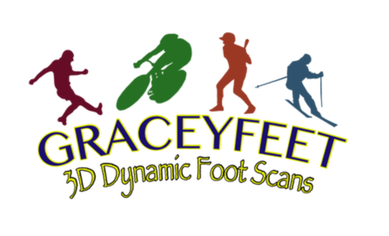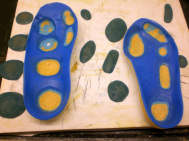|
There is no doubt that a bad case of Shin Splints can be incredibly difficult to rehab from. Shin splints are a painful condition in the lower leg involving inflammation that occurs in the anteromedial compartment (the inside, front of your shins). Shin splints are considered an over-use syndrome and can result from intense ballistic activity such as boxing, running, or plyometric exercises such as platform jumping. The symptoms for shin splints include painful tightness and/or tenderness around the tibia, especially after running or walking for long distances over hard surfaces. Shin splints are generally caused by excessive strain and stress of muscles and tendons along the shin bones (tibia and fibula) and subsequent fluid retention in the interstitial spaces of the anterior leg. There are no contractile fibers over the bone in this area to assist in pumping fluid away, only a broad fascia of connective tissue. When micro-swelling persists in this area, it causes pressure over the bone and a painful ache. Overuse of the surrounding muscles and high ground reaction forces are the most common mechanisms of injury.
Excessive motion of the subtalar joint of the feet serves to increase vertical pressures through the lower legs. Over-pronation leads to internal tibial rotation and increases the tractional forces upon the muscles and ligaments while excessive supination reduces the contact surface area of the foot and drives increased pressures up the limbs.. Rest, Ice, Elevation, Compression, and positive-flow massage are required to help alleviate shin pain; running and other strenuous activities should be avoided until the condition is minimized. Shin Splints can frequently be prevented by warming up with an appropriate stretch routine before participating in intense physical activity. Footwear with hind-foot support and midfoot control in combination with a pressure-reducing insole is a good way to prevent and reduce the effect of shin splints, especially for boxers, football players, runners, or anyone who strikes heavily with the heels or are constantly on their toes. Orthotic insoles are useful in that they help control the foot and reduce excessive plantar pressures and unwanted vibrations. Stability in the frontal plane combined with heel cushioning has been shown to reduce impact ground reaction forces (GRF) while repositioning the force vectors and reducing their magnitude. These changes result in more comfortable weight-bearing during high impact, or long duration activity.
2 Comments
6/19/2019 08:22:54 am
I thought it was great when you said that shin splints can be prevented by warming up with a stretch routine. My brother runs track for his University, and he frequently complains about pain in his legs and shins. It might be a good idea for him to work with a podiatrist to make sure he is not causing any permanent damage.
Reply
5/2/2023 10:19:05 pm
Thank you for the helpful information. If you want to know more about foot problems, treatment and others, you can visit this site.
Reply
Leave a Reply. |
Chris Gracey MPT, Cped
Archives
October 2015
Categories
All
|
Follow Graceyfeet on Facebook and Twitter


 RSS Feed
RSS Feed
